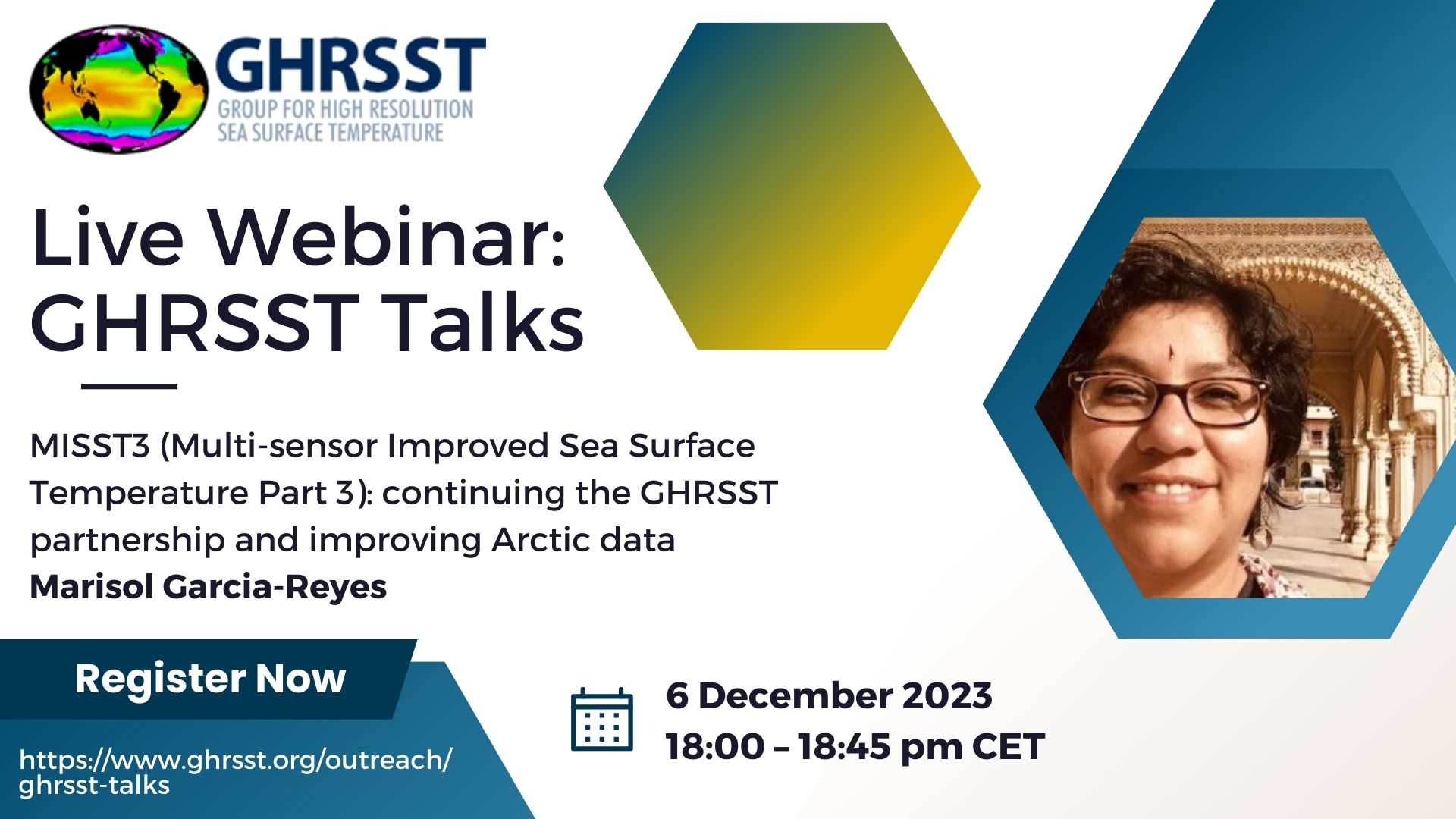Wednesday 6 December 2023
Time
From 18:00 pm-18:45 pm CET
From 17:00 pm-17:45 pm UTC
(check your timezone https://www.worldtimebuddy.com)
MISST3 (Multi-sensor Improved Sea Surface Temperature Part 3): continuing the GHRSST partnership and improving Arctic data
The third and current phase of the Multi-sensor Improved Sea Surface Temperature project (MISST3) has two main objectives: i) continuing the partnership and participation in GHRSST, and ii) improvement of satellite-derived SST data in the Arctic through comparison with in situ data. The MISST3 project builds upon previous phases that were part of the GHRSST since its inception, and since then, the MISST group has actively participated in providing standardized SST data that can be easily accessed and used in weather and climate applications. Previous work undertaken by MISST had a goal to understand biases in SST in “challenging areas.” This phase focuses on the Arctic Ocean and the Marginal Ice Zones. We conducted three field campaigns to collect in situ data during summer months using uncrewed, robotic vehicles called Saildrones, which collect data in the atmospheric boundary layer, at the air-sea interface and in the uppermost 2 m of the sea. These campaigns have provided a valuable data set to validate and understand biases in SST satellite retrievals at high latitudes, and in particular near ice-covered areas. Subsurface thermistors on the Saildrones have revealed large amplitude and sometimes persistent diurnal heating, and the radiometers used in the 2019 cruises have quantified the behavior of the thermal skin layer. With the project entering its last year, we will provide a summary of past and current activities, and of our key results.
About Marisol Garcia-Reyes
Marisol has a background in physics from the National University of Mexico and atmospheric science from the University of California at Davis, but she’s an oceanographer at heart. She has studied coastal upwelling for over 15 years, focusing on its variability, how it relates to climate, and how it impacts its marine ecosystem. Although she uses observations and models, her prefered Her current research focuses in two areas: how climate change, variability, and extreme events impact habitat conditions for organisms (in Eastern Boundary Upwelling regions and in the North Pacific and Bering Sea), and how remote sensing temperature and salinity compare to in situ data in these challenging regions. Marisol also maintains the Multivariate Ocean Climate Indicator for California that gets published every quarter. Marisol is also a mentor, committed to increasing equity in education for people of color, and increasing diversity in sciences in general, and marine sciences in particular.
Registration
GHRSST Talk with Marisol Garcia-Reyes Tickets, Wed, 6 Dec 2023 at 18.00 | Eventbrite
Presentation
The presentation is available on Zenodo: https://zenodo.org/records/10277971
Recording

